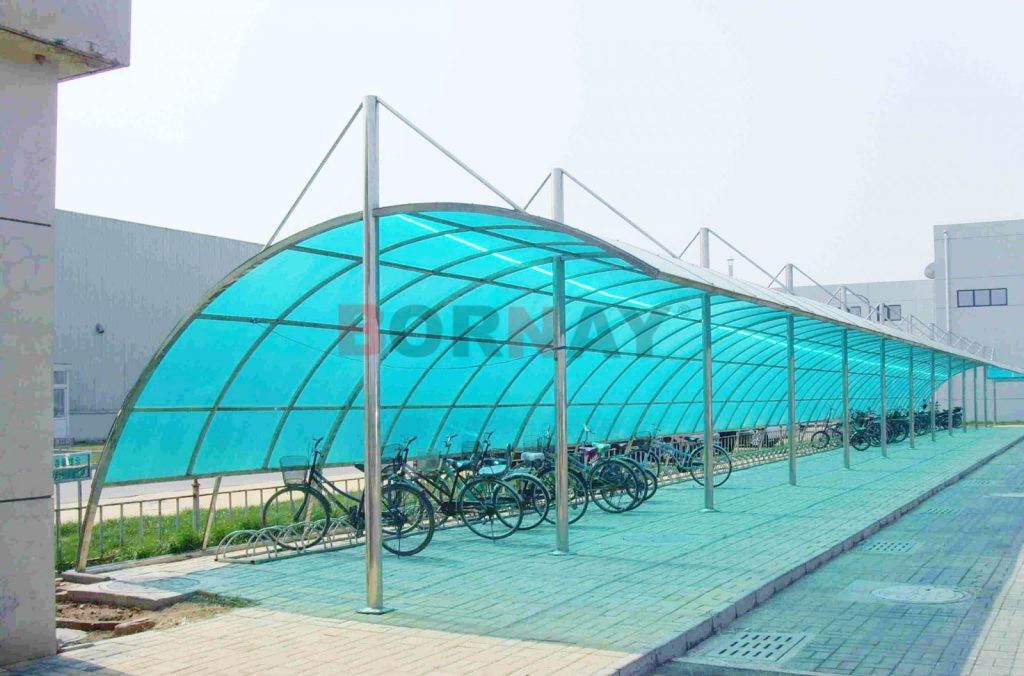bonai@tilefrp.com
Plasticity and Installation Flexibility of FRP Roof Panels: Simplifying Engineering and Improving Efficiency

The plasticity and installation flexibility of FRP roof panels have emerged as key features that simplify engineering processes and significantly improve efficiency in construction projects. These attributes have revolutionized the way roofs are designed, installed, and maintained, offering a range of advantages for both engineers and contractors.

One of the notable benefits of FRP roof panels is their high plasticity, which refers to their ability to undergo significant deformation without breaking or losing their structural integrity. This characteristic allows engineers to shape the panels to fit complex roof geometries and architectural designs. Unlike traditional roofing materials that often require cutting and shaping on-site, FRP panels can be prefabricated with precision, reducing the need for time-consuming and labor-intensive modifications during installation. The plasticity of FRP also enables seamless integration with other building components, such as skylights, vents, and solar panels, further enhancing the overall design and functionality of the roof.The installation flexibility of FRP roof panels is another crucial aspect that streamlines the construction process and improves overall project efficiency. Due to their lightweight nature, FRP panels are easier to handle and transport compared to conventional roofing materials. This characteristic significantly reduces the logistical challenges and costs associated with roofing projects. Furthermore, the installation of FRP panels can be carried out using various methods, including adhesive bonding, mechanical fastening, or a combination of both. This flexibility allows contractors to choose the most suitable installation technique based on project requirements, timelines, and specific site conditions, ensuring efficient and reliable installation.Moreover, the installation flexibility of FRP roof panels extends to retrofitting existing roofs. In many cases, retrofitting involves the removal of the old roofing material, which can be time-consuming and disruptive. However, FRP panels can often be installed directly over the existing roof, minimizing the need for extensive roof removal and reducing project timelines. This adaptability not only saves time but also reduces waste generation and associated costs.The simplified engineering and improved efficiency offered by FRP roof panels extend beyond the installation phase. These panels require minimal maintenance and offer exceptional durability, reducing the need for frequent repairs and replacements. The inherent resistance of FRP to corrosion, rot, and weathering ensures that the roof remains intact and functional for an extended period. This longevity translates into cost savings for building owners, as they can benefit from reduced maintenance expenses and prolonged roof lifespans.Furthermore, the lightweight nature of FRP roof panels contributes to the overall structural efficiency of buildings. The reduced weight places less stress on the building's supporting elements, such as beams, columns, and foundations, resulting in optimized structural designs. This advantage not only simplifies engineering calculations but also offers cost savings by potentially reducing the amount of material needed for the overall building structure.

In conclusion, the plasticity and installation flexibility of FRP roof panels have revolutionized the engineering and construction processes, simplifying roof design, installation, and maintenance. The high plasticity of FRP allows for customization and seamless integration, while the lightweight nature of the panels offers logistical advantages and structural efficiency. These features contribute to improved efficiency, reduced costs, and enhanced project timelines, making FRP roof panels an innovative and practical choice for modern construction projects.



